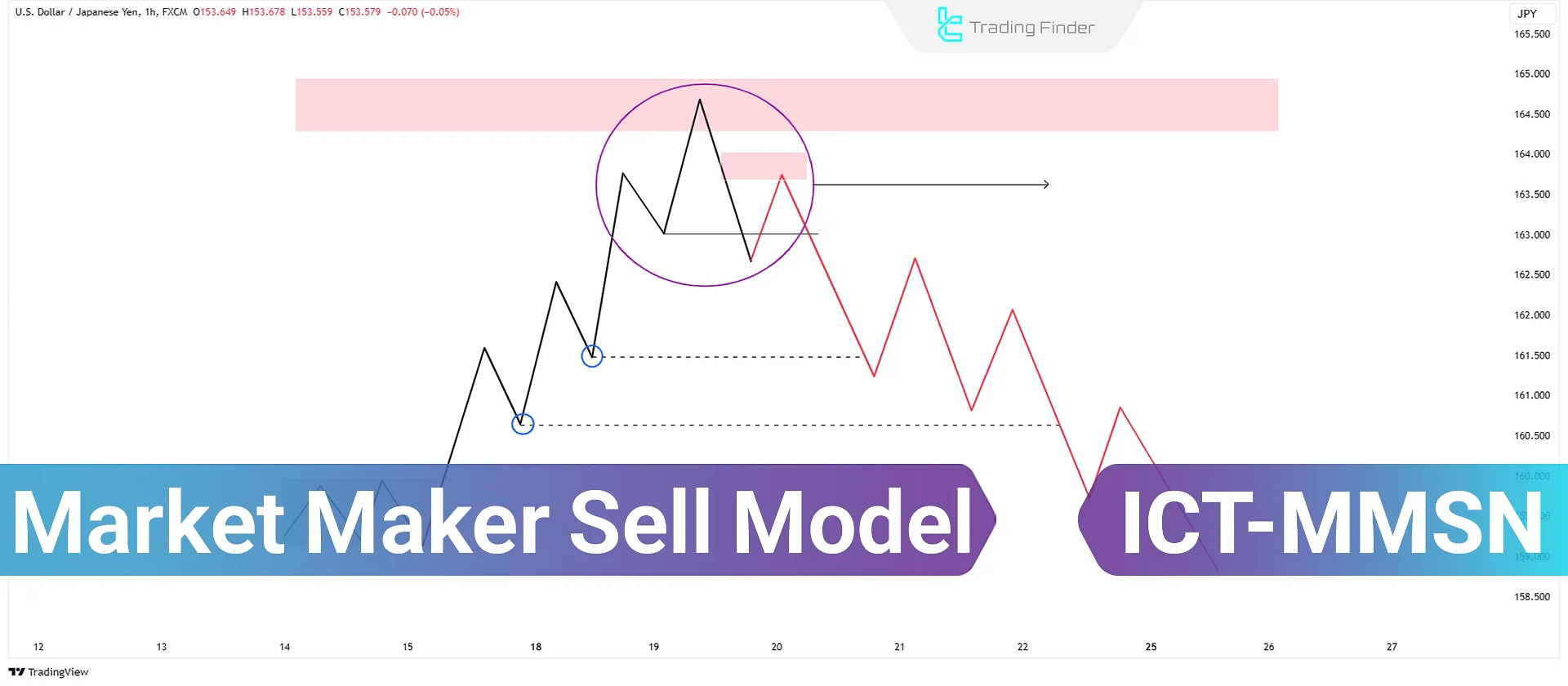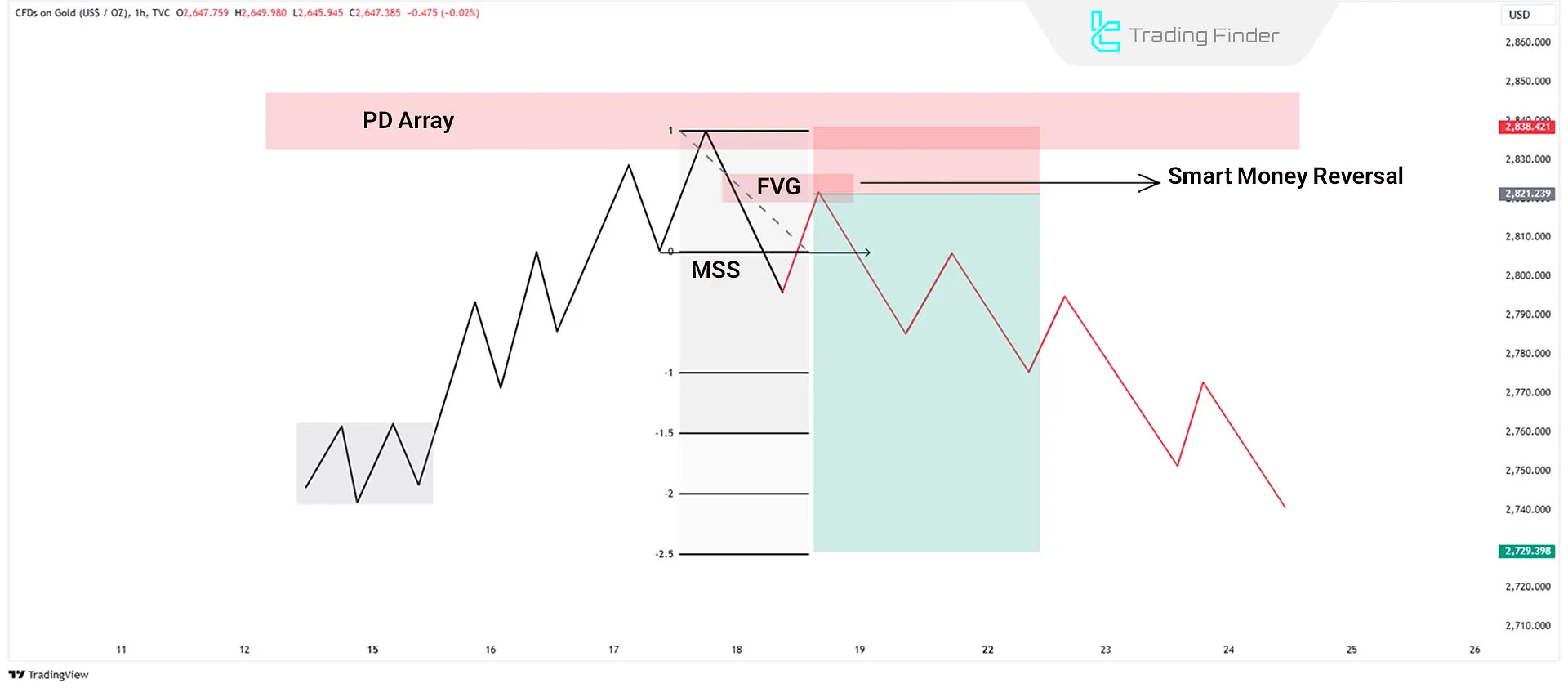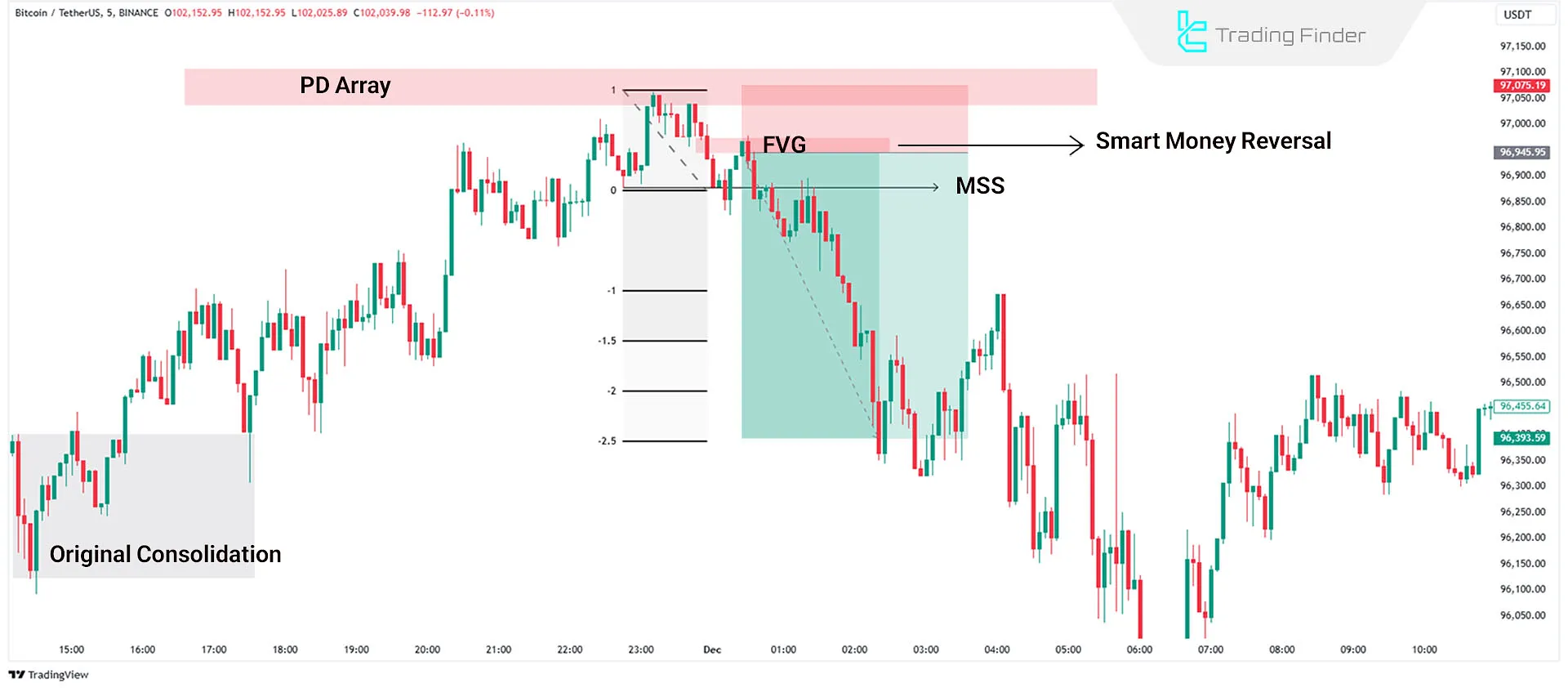ICT Market Maker Sell Model (ICT MMSM) is a trading structure that explains how price transitions from one key bearish PD Array to another key bullish PD Array.
This model provides a clear framework for price movement, allowing for precise trade entries and smaller stop-loss levels.

What is the ICT Market Maker Sell Model?
This model illustrates how price moves from a bearish condition influenced by selling pressure toward a bullish condition [entry points for buyers].
It helps traders better understand trend shifts and price movement dynamics.
What are the Components of the ICT Market Maker Sell Model?
The ICT Market Maker Sell Model consists of four main components:
#1 Original Consolidation
Price oscillates within a defined range, forming a consolidation or range-bound market.
#2 Engineering Liquidity
Price forms higher lows (HLs) during an uptrend, creating liquidity points for future downward moves.
#3 Smart Money Reversal
Upon reaching a significantly higher time frame zone, like a PD Array, the price shifts from the buy-side into the sell-side.
#4 Liquidity Hunt
Price sweeps old lows created during liquidity engineering and returns to the original consolidation range.
#5 Key Zones
- Fair Value Gap (FVG): Imbalance zones for optimal trade entry
- Liquidity Levels: Key liquidity areas, such as previous highs and lows
How to Trade Using the ICT Market Maker Sell Model?
Follow these seven principles for trading the ICT Market Maker Sell Model:
#1 Identify the Bearish Market Structure
In higher timeframes, confirm the market is forming lower highs (LH) and lower lows (LL), indicating a bearish trend.
#2 Locate Liquidity Below the Current Price (Liquidity Draw)
Identify previous lows where liquidity resides; Price often moves toward these levels to capture liquidity.
#3 Wait for a Buy Program in Lower Timeframes
In lower timeframes, wait for a temporary bullish move that pushes the price into a significant bearish PD Array in the higher timeframe.
#4 Confirm Bearish Bias in Higher Timeframes
- When the price reaches a bearish zone in higher timeframes, wait for Market Structure Shift (breaking of lows) and SMT Divergence to confirm bearish movement.
#5 Enter the Sell Trade
Enter a sell trade after the price retraces upward and a market structure shift confirms the bearish trend.
#6 Set Stop Loss
Place your stop-loss 10 to 20 pips above the last swing high, before the market structure shifts.
#7 Define Profit Target
Use the Fibonacci tool to measure from the highest point of the Smart Money reversal to the lowest point of the market structure shift (settings: 1 to -2.5). Alternatively, previous lows can be considered as potential profit-taking levels.

A 5-minute Bitcoin (BTC) chart shows a bearish market shift as market makers enter sell positions.

Key Notes Before Using the ICT Market Maker Sell Model
- Bearish Market Structure in Higher Timeframes: The broader market (daily or weekly) must exhibit bearish trends to support price declines.
- Bearish Daily Bias or Liquidity: Daily price direction (Daily Bias) should align with bearish targets, such as lower liquidity levels (e.g., previous lows).
- Temporary Bullish Moves on Lower Timeframes: Before reaching higher timeframe bearish zones (e.g., PD Array), the price may exhibit temporary bullish retracements on smaller timeframes like 15 or 30 minutes. These moves often precede the continuation of the larger bearish trend.
Conclusion
The ICT Market Maker Sell Model is a trading strategy based on analyzing bearish market structures, identifying liquidity, and entering trades at optimal zones like the Fair Value Gap.
This ICT strategy reduces risk and improves trading outcomes by using confirmations like market structure shifts and risk management (stop-loss and profit targets).
You can practice and learn the setups for this strategy using the MMXM Indicator (Market Maker Buy/Sell Model). In addition, By using One Shot One Kill TradingView indicator from TradingFinder, you can merge the Market Maker Sell Model strategy with the One Shot One Kill strategy. This combination enables you to develop unique trading setups.





